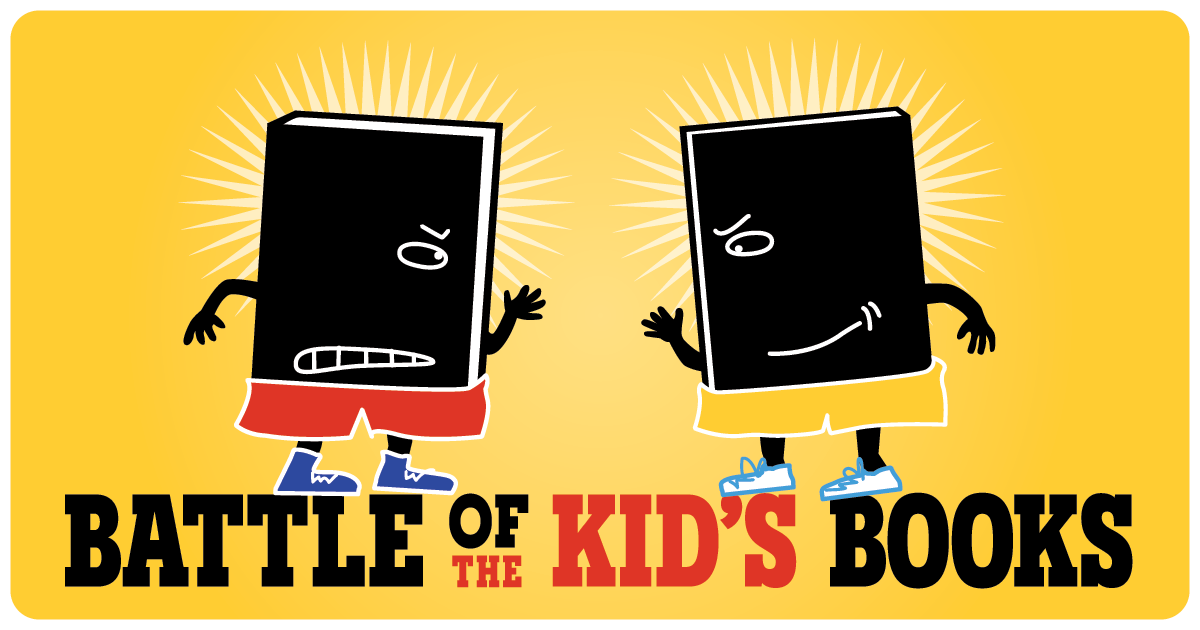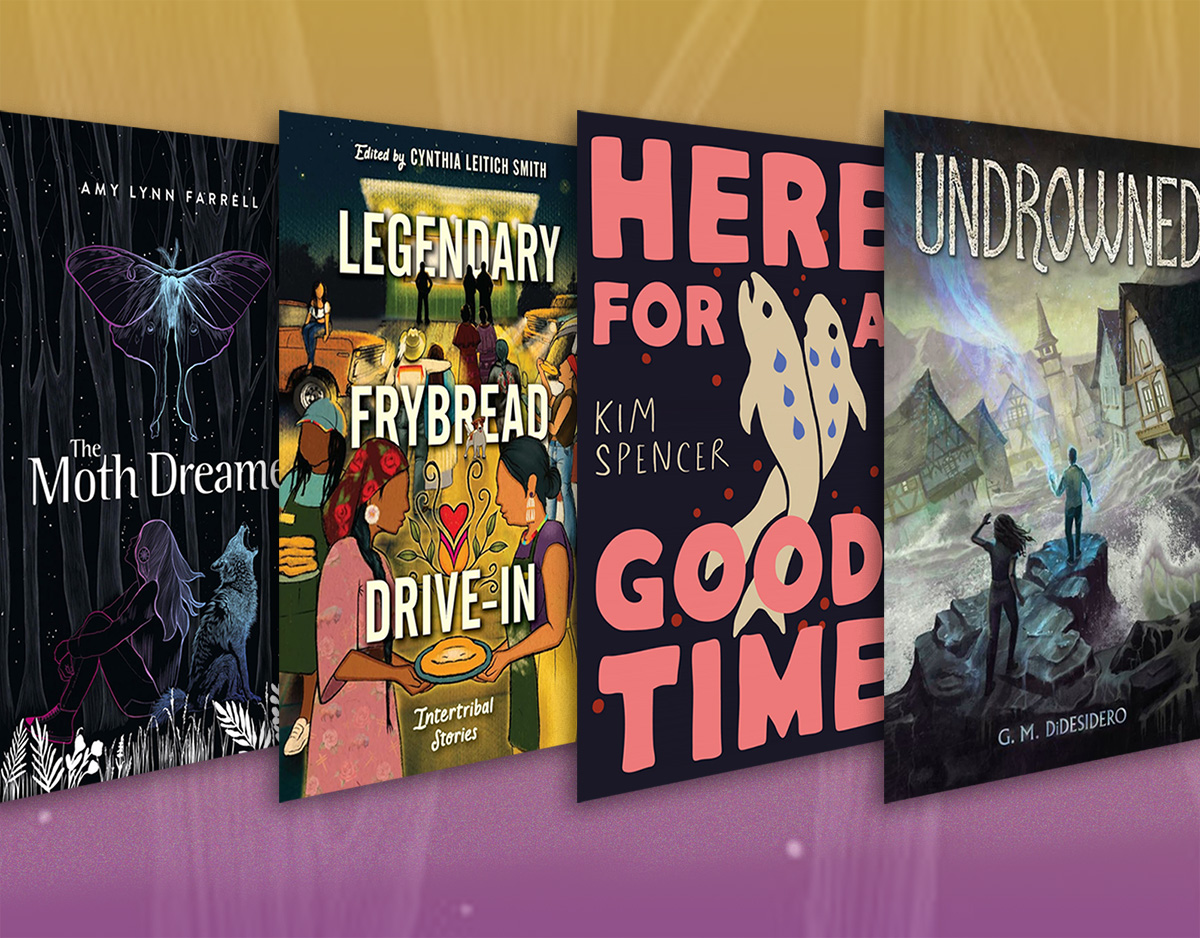SCROLL DOWN TO READ THE POST
The Closing Match: The Marvels vs Gone Crazy in Alabama vs Nimona
|
JUDGE – Ann M. Martin |
||
| Gone Crazy in Alabama by Rita Williams-Garcia HarperCollins |
The Marvels by Brian Selznick Scholastic |
Nimona by Noelle Stevenson HarperCollins |

It sounded if not easy, then not particularly daunting either: the chance to read three books in the last round of SLJ’s Battle of the Books and select one as the winner. I love to read. I love to talk about books. I’ve been an avid reader – and an eclectic one – since the moment in kindergarten when letters on a page began to shape themselves into words. I gobble up kids’ books, adult books, memoirs, mysteries, classics. So I accepted the offer.
Then I was presented with the three finalists and discovered that I was going to have to choose a winner from Gone Crazy in Alabama, The Marvels, and Nimona. That’s when the project tipped over into daunting territory.
I drew in a breath and opened the cover of Gone Crazy in Alabama.
In the first chapter I was drawn into the summer of 1969 and twelve-year-old Delphine Gaither’s world. By the end of that chapter I had learned about the close relationship among Delphine and her sisters, the complicated relationship between Delphine’s parents, Delphine’s stepmother’s pregnancy, and the long-awaited trip that the Gaither girls were about to embark upon. The sisters, who are African-American, were to travel to Alabama, and their father reminds them that “The South’s not like Bed-Stuyvesant and you can’t get more southern than Alabama.” These elements were introduced fluidly and flawlessly, along with the sounds, smells, and tastes of the Gaithers’ Brooklyn neighborhood. And all in four pages.
Delphine’s story and her family history are complicated. But in the hands of Rita Williams-Garcia they don’t feel complicated. Quirky characters come to life with depth and nuance, as do the settings in the story. What a visit the Gaither girls have with their grandmother, Big Ma, and their great-grandmother, Ma Charles, that summer. The Alabama countryside in which they live, across a creek from Ma Charles’s estranged half-sister, Miss Trotter, seems quiet. But hiding just beneath the surface are racial tensions with far-reaching tentacles. Delphine and her sisters cross the creek almost daily to visit with Miss Trotter and learn about their complex family history. At the same time, Delphine tries to reconcile the more conservative views of the southern side of her family with the ties of her outspoken mother to the Black Panthers.
Delphine and her sisters, who have recently visited their mother in Oakland, seem comfortable with the duality of their existence that summer. I felt comfortable with it too, until a tornado sweeps through their town and the white sheriff, who is distantly related to Ma Charles, says, referring to Delphine’s little sister who has gone missing during the storm, that the tornado “was bad enough to toss that Negro rag doll clear ‘cross the country, out of this lifetime.”
Wham.
And there are several whams in Gone Crazy in Alabama. Williams-Garcia touches upon a great many issues, but each is dealt with deftly and in the arms of such a caring family that I wanted to be able to step into Big Ma’s house myself, even if it meant I would have to brave the sheriff or watch the Klan ride at night.
I read the last page of this gem and felt certain I had already found the winner of the battle.
I turned next to The Marvels. I breezed through the first 400 pages of the book – this part of the story told entirely in pictures – and quickly realized that breezing through them was not a good idea. I needed to pay close attention to the details, so I turned back to the beginning and started over.
The Marvels, which is told in pictures, then in words, then in pictures again, swoops the reader up in the first few pages and swoops back and forth throughout the story, from twist to twist, right up to the surprising and satisfying conclusion. The beginning is an adventure story, the saga of the Marvels, a dazzling theatre family. It starts in 1766 and ends more than 200 years later with a stunning cliffhanger. The second part of the story begins almost a hundred years after that, spotlighting a character named Joseph who seems unrelated to the Marvels. But clues in the earlier pictures tell the reader that the address runaway Joseph seeks is the address at which Leontes Marvel lived in 1900.
Joseph’s story then becomes a mystery, but much more than that. It’s a tale of alienation and longing, family ties and forgiveness, love and art and poetry. Joseph struggles mightily to reconcile the story of the Marvels, which he listens to on a cache of hidden tapes in the mysterious house owned by his equally mysterious uncle, with what he knows of the past. In an ingenious twist, Joseph learns that the story of the Marvels is just that. A made-up story. This is quite a surprise for the reader too. Furthermore, there is no mystery to the seemingly mysterious house. There’s a fascinating and heartbreaking explanation, but not the mystery Joseph expected. And pinning all these elements together is a love story, one that was shaped by the beginning of the AIDS epidemic. Eventually, Joseph loses the uncle to whom he has grown close, but he has learned something about stories and storytelling, so he embarks on the rest of his own story, the rest of his life, finally feeling comfortable in his skin.
Another gem. I closed the book, opened it again, looked through the final part of the story, and was certain, for the second time, that I had found the winner of the battle.
I opened Nimona. What a setting Noelle Stevenson has created – one in which the worlds of technology and peasantry merge seamlessly. Nimona, the sidekick (that’s how she introduces herself) to supervillain Ballister Blackheart, was first introduced as a web comic. In Nimona she stars in her own full-length graphic novel. Nimona is fierce, brash, intrepid, gutsy, and sometimes violent. She seems to be fighting on the wrong side of the law (after all, she’s the sidekick to a supervillain), yet the reader roots for her from her first words on the first page of the book. And what’s the first thing Nimona does on that first page? She lies to Sir Blackheart. After that, her behavior crashes from bad to worse. It turns out that she’s a shapeshifter. Given her ability to become a shark or a fire-breathing dragon, you can imagine how helpful she might be to a supervillain. But she’s unpredictable and apt to take matters into her own hands.
Nimona, however, is not a tale told in black and white. The lines between good and evil blur very quickly. There’s more Robin Hood than Captain Hook to Lord Blackheart, and Nimona’s behavior is more a hindrance to his quest than a help. Yet Blackheart, grumpy though he may be, sees beneath her wild exterior to her vulnerable core, and so does the reader. Even when Nimona is vicious and caged, we’re rooting for a happy ending for her. The ending, though, is not happy for Nimona. But it’s believable and manages, after pages and pages of villains and duals and dragons and evil plans, to come down to love, friendship, and loyalty.
I set Nimona down with a sigh. I had just found my third winner. Three gems. Three books that I would enthusiastically put in the hands of any kid I know. And I had to choose one of them. All three stories are, one way or another, about identity – about searching for your past and trying to fit into your present. The stories of the Gaither sisters and Nimona are told with humor, not an easy feat where Gone Crazy in Alabama is concerned. All three include breathlessly unexpected plot twists.
But in the end I chose the story that plays with the very art of storytelling – The Marvels.
— Ann M. Martin

Kid Commentator Statements will be featured in the Comments area since neither of them knew the outcome before the final match day!

EXTRA! EXTRA!
Congratulations to
THE MARVELS
WINNER
2016 SLJ Battle of the Kids’ Books
A Final Thank You to all our judges, the SLJ team, and BoB followers.
Mark, you have once again enlivened these pages with your whimsical and thoughtful art!See you all next year!
Filed under: 2016, The Closing Match
About Battle Commander
The Battle Commander is the nom de guerre for children’s literature enthusiasts Monica Edinger and Roxanne Hsu Feldman, fourth grade teacher and middle school librarian at the Dalton School in New York City and Jonathan Hunt, the County Schools Librarian at the San Diego County Office of Education. All three have served on the Newbery Committee as well as other book selection and award committees. They are also published authors of books, articles, and reviews in publications such as the New York Times, School Library Journal, and the Horn Book Magazine. You can find Monica at educating alice and on twitter as @medinger. Roxanne is at Fairrosa Cyber Library and on twitter as @fairrosa. Jonathan can be reached at hunt_yellow@yahoo.com.
ADVERTISEMENT
SLJ Blog Network
Books on Film: Watch the Trailer for the POUT-POUT FISH
Periodically Pleasing: A Talk with Helen Hancocks of SHELF
Kamudo, vol. 1 | Review
Here Have Some YA Books to Bring Back Those Summer Vibes
The Classroom Bookshelf is Moving
Derrick Barnes Visits The Yarn
ADVERTISEMENT
ADVERTISEMENT








